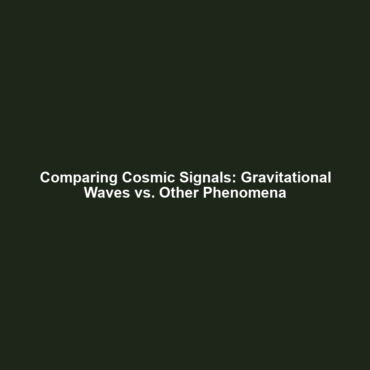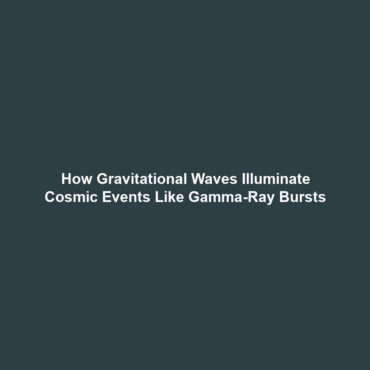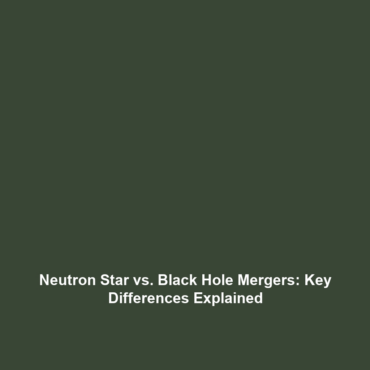<>
How Weak the Signals are Compared to Other Cosmic Phenomena
Introduction
The study of gravitational waves has transformed our understanding of the universe, but one of the most intriguing aspects is the relative weakness of the signals they produce. Compared to other cosmic phenomena, such as gamma-ray bursts or supernovae, the signals of gravitational waves are incredibly faint. This article delves into the significance of these weak signals, exploring both their implications for astrophysical research and the challenges faced by scientists in detecting and interpreting them. Understanding how these signals measure up to other cosmic markers is crucial for advancements in the field of gravitational wave astronomy.
Key Concepts
What are Gravitational Waves?
Gravitational waves are ripples in spacetime caused by some of the most violent and energetic processes in the universe, such as the merging of black holes or neutron stars. These waves were first predicted by Albert Einstein in 1916 and were directly detected in 2015 by the LIGO observatory.
Signal Strength and Characteristics
Unlike electromagnetic signals, which can be detected across vast distances with telescopes, gravitational waves are extremely weak. The amplitude of these signals is often on the order of 10^-21, making them challenging to detect against the background noise of the universe. Key factors contributing to their faintness include:
- Distance from the source: Gravitational waves diminish in strength with distance.
- Source type: Different cosmic events emit varying levels of energy.
- Interference: Other astrophysical events can mask gravitational wave signals.
Applications and Real-World Uses
The detection and analysis of weak gravitational wave signals have profound applications in the realm of astrophysics. Below are several ways these signals are utilized:
- Understanding Cosmic Events: Weak gravitational waves allow astrophysicists to study cataclysmic events like black hole mergers and neutron star collisions.
- Testing General Relativity: Analyzing the faint signals helps verify predictions made by Einstein’s theory of relativity.
- Multi-Messenger Astronomy: Gravitational waves complement findings from electromagnetic observations, providing a more comprehensive picture of cosmic phenomena.
Current Challenges
Researchers face several challenges when studying the feeble signals emitted by gravitational waves:
- Noise Pollution: Terrestrial and celestial noise can interfere with signal detection.
- Technological Limitations: Current detectors may struggle to discern weak signals amidst noise.
- Data Interpretation: Analyzing the data from faint signals is complex and requires advanced algorithms.
Future Research and Innovations
The future of studying weak gravitational wave signals looks promising, with advancements on the horizon. Key areas of research and innovation include:
- Enhanced Detectors: Development of more sensitive instruments could lead to improved signal detection.
- Space-Based Observatories: Future missions, like LISA (Laser Interferometer Space Antenna), aim to detect lower-frequency gravitational waves that current ground-based detectors cannot.
- Advanced Algorithms: Machine learning and AI are expected to play a crucial role in processing the vast amounts of data.
Conclusion
In summary, the weakness of gravitational wave signals compared to other cosmic phenomena presents both challenges and opportunities for researchers. Understanding these faint signals is critical to advancing our knowledge of the universe. To explore more about gravitational waves and their implications, click here. Embracing the future of astrophysical research relies on our ability to innovate and improve detection methods. Stay tuned for further developments in this groundbreaking field.


